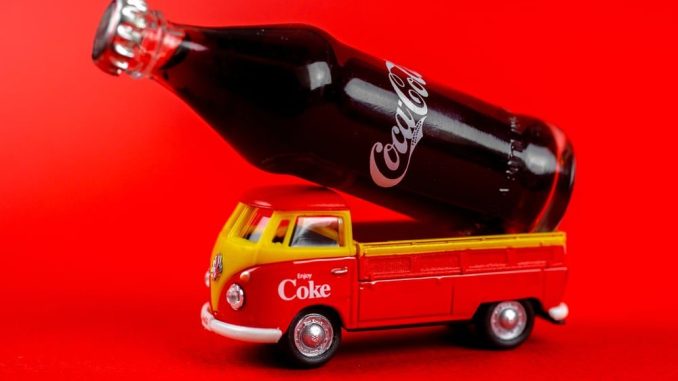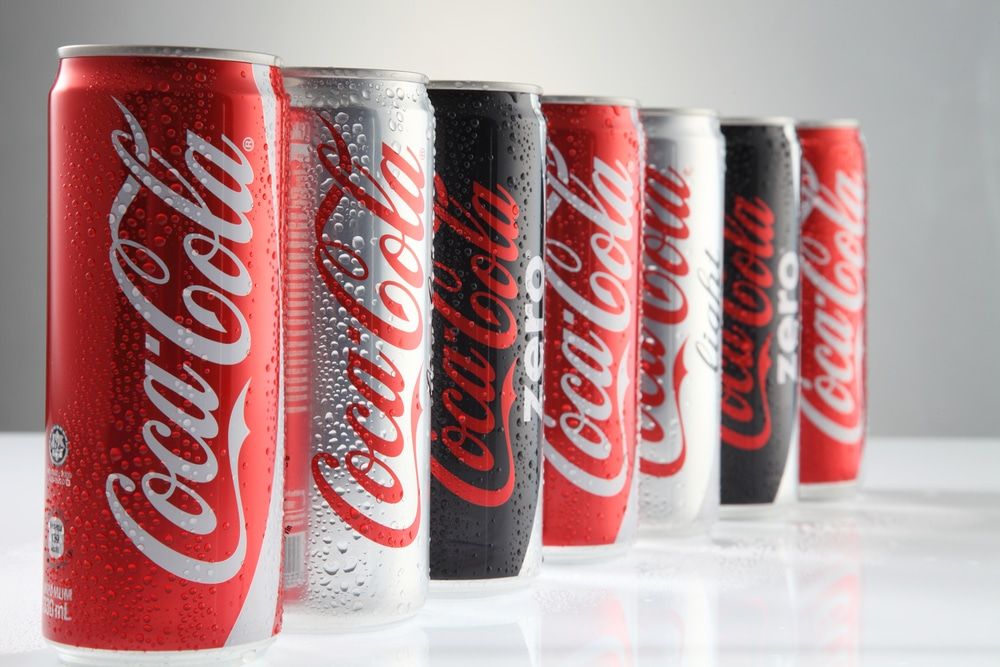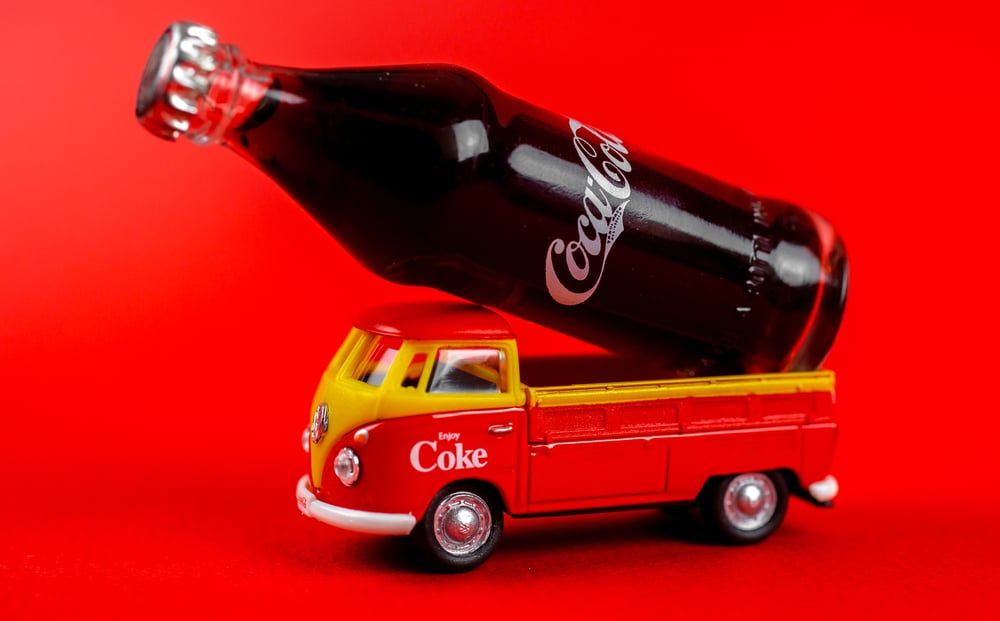
Coca-Cola's Marketing Strategy
Coca-Cola managed to go beyond the brand content stage long ago. Indeed, the brand has created a world of its own over more than a century of existence. This brand culture relies on its timeless physical media and universal values.
For example, its logo and iconic bottle immediately evoke freshness and joie de vivre around the world.
Who is Coca-Cola's target audience?
Overall, Coca-Cola's marketing strategy does not focus on any particular target. This is one of the brand's greatest strengths. It seeks to cover all consumer profiles to expand its customer base and market share as much as possible.
The company considers young people, adults, children, women, men, etc. as potential customers.
Such an approach represents a undeniable competitive advantage. Indeed, the American giant has a virtually inexhaustible supply of prospects. New customers will inevitably increase its sales and margins.
This marketing approach also allows to maintain a brand image transcending cultural, generational, social differences, etc.
Following this logic, the company develops its marketing and sales actions in order to to reach all segments of the population. However, it must not fall into overly generalized and meaningless messages. The guideline is clear and proven.
The marketing team must remain coherent with the business objectivebrand identity built throughout the history of Coca-Cola.
In practice, the brand relies on a scalable and responsive product policy. It therefore set up synergies between its communication, marketing and development divisions. The idea is to create specific lines for each population from the start.
Targeting will then be based on this segmentation. Any identified gap will lead to market research and possibly a new product.

What is the marketing strategy of Coca-Cola? ?
The marketing strategy of Coca-Cola has come a long way since its founding in 1885. L'business objective was quite explicit during the first years. This approach was perceptible through slogans such as "Drink Coca-Cola" (1886) or "Good To The Last Drop" (1908).
The emerging rivalry with Pepsi also pointed towards these marketing techniques. It was indeed necessary to differentiate the soft drink.
Based on 1922, the marketing approach s, the company began to evolve by emphasizing the refreshing character of the product. This quality was already promoted a few years earlier with the slogan "Delicious and refreshing" (1904). But this time, the Coca-Cola brand aims to become synonymous with freshness.
The marketing managers explored this theme for several decades.
The " refreshment "s marketing and sales strategy parenthesis during the Second World War. Over this period, the company has focused on hope and family-oriented messages. It then returned to the character of the non-alcoholic drink in the 1950s, notably with "Be really refreshed" (1959).
In 1979, "Have a Coke and a Smile" first associated happiness with Coke.
In the 1980s, the company 1980, the brand thus had all the values that make up its identity. All of these phases explore specific strong, universal and timeless ideas. Coca-Cola's communication policy is distinguished by this quest for meaning in simplicity.
In this way, all consumers will be able to recognize themselves in its products and its brand speeches.
A global marketing strategy
The 1980s marked a change of scale The Coca-Cola Company's marketing and sales strategy. The company's flagship soda line has enjoyed impressive longevity and a long history of success international reputation. In addition, the group has diversified over the years.
It was therefore necessary to strengthen Coke's positioning by coordinating its communication and distribution on the world market.
This marketing policy is concretely translated by impactful campaigns as "Coca-Cola, that's it". While seemingly simplistic, this message crystallizes the notoriety and the authenticity of the brand. The marketer no longer needs to formulate a speech or praise the product. It is enough to introduce to the public this icon of the soft drink market.
In addition, the product conveys the values of the group.
Over the years, the company's marketing approach has been maintained in all markets. The unification of the theme also develops a community and a brand culture without borders. This global strategy was then reinforced by the advent of Webmarketing and social networks.
The brand is now launching a series of global marketing campaigns such as "Savour the moment" (2016).

An incredible control of its brand image
The marketing strategy of Coca-Cola is especially characterized by its consistency. Throughout the world, the brand uses the same colors, packaging, logo, typography, graphics, etc. The only exception was China, where the name was changed to "Kekoukele. This term is nevertheless close to the "Kekoukele" original sound.
In addition, it means "tasty pleasure", thus maintaining the global theme of the brand.
For your information, the name is a "Coca-Cola" The line was then drawn to the Chinese market. The group therefore adopted a different communication strategy in this territory to reach the public. On the other hand, the brand has kept all its other specificities, like the Spencerian font used since its inception.
The "Contour" glass bottle celebrated its 100th anniversary in 2015.
Finally, the brand culture of Coca-Cola is focused on values maintained since its creation. They can be summarized in a few simple principles: freshness, family and happiness. In this universe, the Santa Claus provides an amazing role for consistency and corporate strategy.
It solves the incompatibility of coolness with winter by emphasizing the family and festive atmosphere.
Relevant product diversification: the example of Coca Life
Coca Life was launched in 2014 in several countries, including the UK, France and Switzerland. Three years later, the company stopped marketing the product in the UK. The line was then gradually withdrawn other markets. This non-alcoholic drink was meant to be healthier by favouring stevia over sugar and aspartame.
In the end, it did not succeed in convincing.
Even if it is a failure, this example gives a overview of the brand strategy of the American group. It does not hesitate to diversify its products and test a new line directly with consumers. The concept will eventually be abandoned, if the experiment proves inconclusive.
This was the case with Coca Life, which failed to create sufficient demand to be viable.
The problem with this novelty was in particular in its positioning. The range focused on its natural alternative to sugar and sweeteners. However, this formula struggles to find its place among the many variants of Coke. It is, of course, lighter than the historical version of. However, the product remains sweeter than Coca-Cola Zero and Diet Coke.
Thus, it could not find its audience.